UPSC Daily Current Affairs: 8th June 2025 | Current Affairs & Hindu Analysis: Daily, Weekly & Monthly PDF Download
GS3/Environment
Key Facts about Powai Lake
Source: TOI
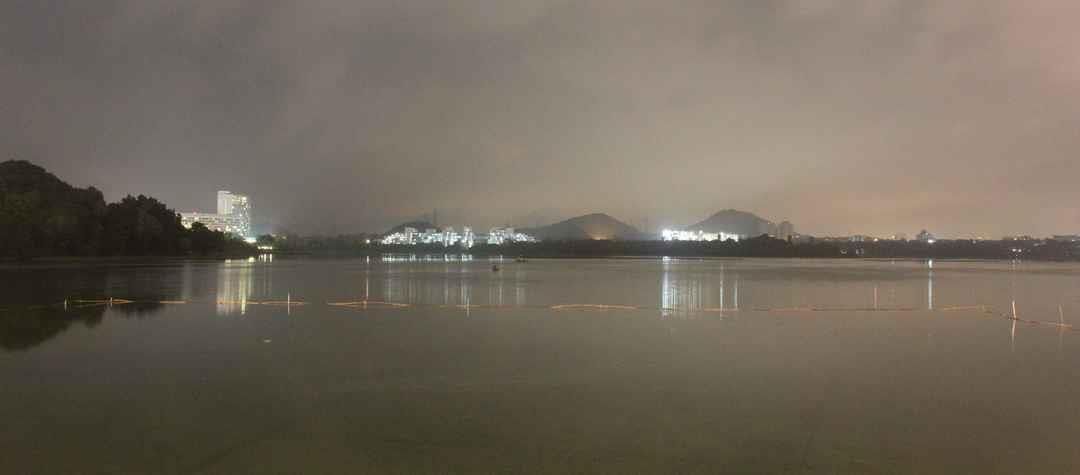 Why in News?
Why in News?A planned human chain event titled "Save Powai Lake," organized by local residents and nature enthusiasts, was recently called off due to the Brihanmumbai Municipal Corporation's (BMC) demand for a nominal fee of Rs 11,000 to hold the event by the lakeside.
Key Takeaways
- Powai Lake is an artificial lake located in the northern suburb of Mumbai, Maharashtra.
- Constructed by the British in 1890, it was developed to enhance the water supply to Bombay.
- The lake features two dams, approximately ten meters high, built across two hillocks.
- It is flanked by the lowest slopes of the Western Ghats on its southern edge.
- The lake's catchment area spans 6.6 sq.km, with depths ranging from 3 to 12 meters.
- Nearby, two prominent institutions are located: the Indian Institute of Technology-Bombay (IIT-B) and the National Institute of Industrial Engineering (NITIE).
- Powai Lake is encircled by the Powai Bird Sanctuary, vital for various bird species.
Additional Details
- Bird Sanctuary: The Powai Bird Sanctuary is an important habitat for both resident and migratory birds, serving as a crucial resting, feeding, and breeding site.
- Notable Species: The lake is home to several rare birds, including the Watercock, Pheasant-tailed Jacana, Slaty-legged Crake, Ruddy-breasted Crake, Woolly-necked Stork, Caspian Tern, and Peregrine Falcon.
In summary, Powai Lake is not only a vital water resource for Mumbai but also an ecological treasure, deserving protection and conservation efforts.
GS1/History & Culture
Honoring Raja Bhabhut Singh: A Tribute to a Tribal Icon
Source: Deccan Chroncile
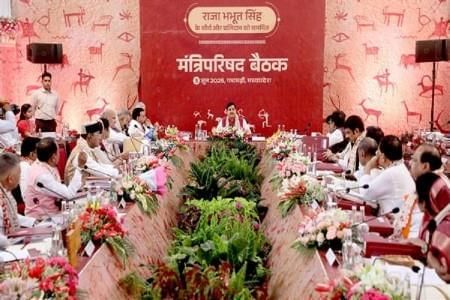 Why in News?
Why in News?The Madhya Pradesh government recently convened a special Cabinet meeting to honor the legacy of 19th-century tribal leader Raja Bhabhut Singh by renaming the Pachmarhi Wildlife Sanctuary in his memory.
Key Takeaways
- Raja Bhabhut Singh was born into the Jagirdar family of Harrakot Raikheri, descended from Thakur Ajit Singh ji, the owner of the Pachmarhi Jagir.
- He played a crucial role against British colonial forces during the 1857 revolt, utilizing guerrilla warfare tactics.
- Raja Bhabhut Singh is regarded as a martyr and is celebrated in Korku folk traditions.
Additional Details
- Background: Raja Bhabhut Singh was a key figure of the Gond tribe, ruling over Jabalpur and the Satpura hills. His family had historical connections, with his grandfather Thakur Mohan Singh supporting Peshwa Appa Saheb Bhonsle against the British.
- Guerrilla Warfare: He employed his knowledge of the Satpura forests to lead successful guerrilla attacks against British forces, earning him the nickname "Shivaji of Narmadachal."
- Despite his formidable resistance, he was ultimately captured and executed by British forces in 1860, cementing his status as a martyr.
The remembrance of Raja Bhabhut Singh serves as an important reminder of the rich history of tribal resistance during the colonial period in India, ensuring that his legacy continues to inspire future generations.
GS2/Polity
Census Set to Trigger NPR Update
Source: TOI
 Why in News?
Why in News?The upcoming Census, planned in two phases during 2026 and 2027, is set to play a crucial role in various governmental processes, including delimitation and the implementation of the Women’s Reservation Bill. This Census is also expected to facilitate an update to the National Population Register (NPR), which may pave the way for a nationwide National Register of Citizens (NRC) exercise.
Key Takeaways
- The Census will occur in two phases in 2026 and 2027.
- It is intended to enable the delimitation of constituencies and the Women’s Reservation Bill.
- NPR updates are likely during the house listing phase.
- The NPR-NRC issue has been politically sensitive, leading to nationwide protests.
- The recent Census announcement did not mention the NPR or NRC explicitly.
Additional Details
- NPR Update: The National Population Register (NPR) will be updated during the house listing phase of the Census. However, decisions regarding the nationwide implementation of the NRC are still pending.
- Political Context: The NPR and NRC have faced significant opposition, notably after the Citizenship Amendment Act (CAA) was introduced in 2019, leading to widespread protests in various states.
- Legal Framework: The NPR operates under the Citizenship (Registration of Citizens and Issue of National Identity Cards) Rules, 2003, which were framed under Section 18 of the Citizenship Act, 1955.
- Historical Background: NPR data collection began in 2010 and was updated in 2015. The initiative was revived in 2019 amidst concerns over a potential nationwide NRC.
In conclusion, the upcoming Census not only serves as a demographic exercise but also holds significant implications for the country’s socio-political landscape, particularly concerning citizenship and representation.
GS3/Environment
Dynamic Route Planning for Urban Green Mobility (DRUM) Web App
Source: The Hindu
Why in News?
The DRUM web app, developed by an associate professor and students at IIT Kharagpur, aims to enhance urban mobility by offering eco-friendly route options based on real-time air quality and energy efficiency data.
Key Takeaways
- The app provides users with five different route options: shortest, fastest, least exposure to air pollution (LEAP), least energy consumption route (LECR), and a suggested route that combines all four factors.
- It fetches live pollution and traffic data as soon as a user inputs a route, rather than at set intervals.
Additional Details
- Routing Technology: The app utilizes GraphHopper, a Java-based routing library, to generate multiple route options while retrieving real-time traffic updates from Mapbox.
- The development team sourced data from the Central Pollution Control Board (CPCB) and the World Air Quality Index.
- Pollution Estimation: They implemented a segment-wise interpolation strategy to evaluate pollution levels in areas lacking direct sensor coverage. Routes are divided into segments, using nearby sensor data to estimate pollution in areas without sensors.
- The team tested the app by simulating various corridors in Delhi, including East, South, North, and Central, to account for differences in traffic, road quality, and pollution patterns.
Initial results indicated that routes designed to be shorter or faster frequently traversed polluted areas, which could negate the benefits of time or distance savings.
GS1/Geography
Key Facts about Kalvarayan Hills
Source: The Hindu
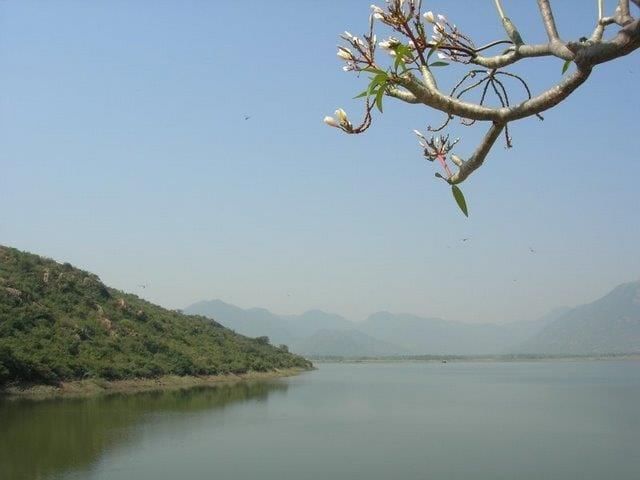 Why in News?
Why in News?Recently, a significant achievement was made as a girl from the tribal community in the Kalvarayan Hills secured admission to an IIT for the first time, highlighting educational advancements in the region.
Key Takeaways
- The Kalvarayan Hills are located in the Eastern Ghats of Tamil Nadu.
- They rise between 2000 to 3000 feet and cover an area of 1095 sq.km.
- The hills are divided into two sections: Chinna Kalrayans and Periya Kalrayans.
Additional Details
- Geographical Significance: The Kalvarayan Hills separate the Kaveri River basin to the south from the Palar River basin to the north, playing a crucial role in the region's ecology.
- The Chinna Kalrayans average 2700 feet in height, while the Periya Kalrayans average 4000 feet.
- Vegetation: The hills are covered with grassy jungles, deciduous forests, and Sholas, supporting a diverse ecosystem.
- The region features notable attractions including two waterfalls (Megam and Periyar Falls), a botanical park, numerous temples, and extensive woodlands.
- The Gomukhi Dam is situated at the foothills of the Kalvarayan Hills, providing essential resources for the local communities.
- The Kalvarayan Hills are home to indigenous peoples, including the Malayan tribes, who contribute to the cultural richness of the area.
This recent achievement not only marks a milestone for the tribal community but also emphasizes the importance of educational access in remote regions like the Kalvarayan Hills.
GS3/Environment
Ranthambore Tiger Reserve
Source: TOI
 Why in News?
Why in News?The Supreme Court has mandated an immediate ban on all mining activities within the core area of the Ranthambore Tiger Reserve, emphasizing the need for conservation in this vital ecological zone.
Key Takeaways
- The reserve is located in the Sawai Madhopur district of southeastern Rajasthan.
- Named after the Ranthambore Fort, a UNESCO World Heritage Site, the area was historically a royal hunting ground.
- It spans approximately 1,411 square kilometers, making it one of the largest tiger reserves in northern India.
Additional Details
- Geographical Features: The reserve is surrounded by the Vindhya and Aravalli hill ranges, showcasing a diverse landscape of boulder-strewn plateaus, lakes, and ancient forts.
- Rivers: It is bordered by the Bana River to the north and the Chambal River to the south, with notable water bodies within the park including Padam Talab, Raj Bagh Talab, and Malik Talab.
- Flora: The reserve features dry deciduous forests and open grassy meadows, with prominent species such as the Dhok tree (Anogeissus pendula), Acacia, Capparis, Zizyphus, and Prosopis.
- Fauna: The diverse wildlife includes leopards, caracals, jungle cats, sambars, chitals, chinkaras, and wild boars.
This recent judicial order highlights the importance of preserving the ecological integrity of the Ranthambore Tiger Reserve, ensuring that its unique biodiversity and heritage are protected for future generations.
GS3/Science and Technology
What is Proton Emission?
Source: Nature
Why in News?
An international collaboration of researchers has recently made a significant discovery by detecting and measuring the half-life of the heaviest known proton emitter, the isotope 188At (astatine), which decayed by emitting a proton.
Key Takeaways
- Proton emission is a rare form of radioactive decay where a proton is ejected from an atomic nucleus.
- This decay process contributes to the transition of an unstable atom into a more stable form.
- Proton emission can occur from high-lying excited states or from the ground state of very proton-rich nuclei.
Additional Details
- Proton Emission: This decay process is also known as proton radioactivity and is characterized by the release of a proton from a nucleus.
- Radioactive Decay: This is a process where unstable atoms release subatomic particles and energy or capture an orbital electron to achieve stability.
- Proton emission can result from beta decay, known as beta-delayed proton emission, where the emission occurs after the beta decay process.
- It is essential for the proton separation energy to be negative, allowing the proton to escape the nucleus through quantum tunneling.
- Unlike alpha decay, where an alpha particle (2 protons and 2 neutrons) is emitted, proton emission is less common and typically not observed in naturally occurring isotopes.
- Proton emitters are generally synthesized in laboratories using particle accelerators.
- The rate of proton emission is influenced by various potentials within the nucleus, including nuclear, Coulomb, and centrifugal potentials.
- The half-life of a proton emitter is determined by the energy of the emitted proton and its orbital angular momentum.
This research on proton emission enhances our understanding of nuclear physics and the stability of atomic nuclei, shedding light on the processes that govern radioactive decay.
GS3/Defence & Security
Key Facts about Bailey Bridge
Source: TOI
Why in News?
Residents of Milam village in Uttarakhand are facing significant accessibility issues following an avalanche that damaged the Bailey bridge over the Gaokha River.
Key Takeaways
- The Bailey bridge is a type of modular bridge that is pre-fabricated for quick assembly.
- Invented by English civil engineer Donald Coleman Bailey in 1941, it was first deployed by the British Army during the North African campaign in 1942.
Additional Details
- Modularity: Bailey bridges are made of modular steel panels that can be easily transported and assembled using only manpower.
- Construction Method: The construction involves assembling prefabricated panels into sections, which are connected using pins and bolts to create a truss structure that distributes loads evenly.
- The design allows them to support heavy loads, including tanks and military vehicles, and can be configured to span various gaps and obstacles, making them versatile in different terrains.
- Bailey bridge assembly requires minimal space, making it suitable for areas where large hoisting equipment cannot access.
- These bridges are primarily used in locations such as rivers and valleys where spans are not excessively large.
In summary, the Bailey bridge stands out for its rapid construction capability in challenging environments, and its significance is highlighted by the current accessibility crisis in Milam village.
GS2/Polity
National e-Vidhan Application Inauguration
Source: PIB
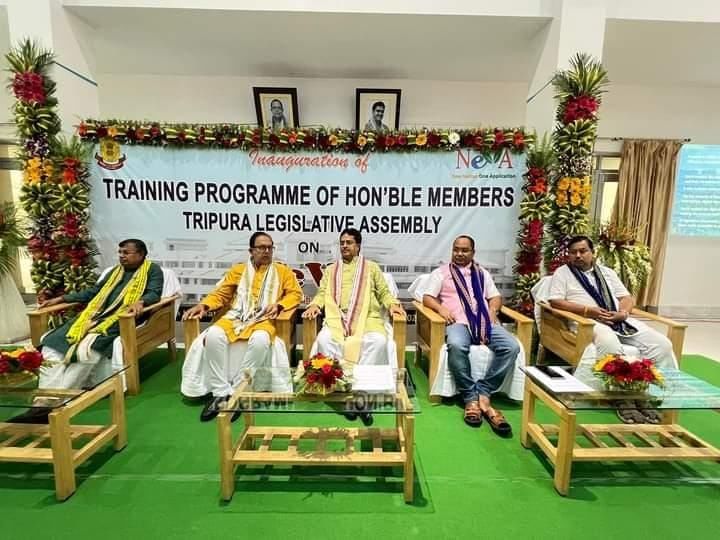 Why in News?
Why in News?The National e-Vidhan Application (NeVA) is set to be inaugurated by the Union Minister of State for Information and Broadcasting & Parliamentary Affairs for the Puducherry Legislative Assembly on June 9. This digital initiative aims to enhance the efficiency of legislative processes in India.
Key Takeaways
- NeVA is a digital platform designed to make India's legislatures paperless.
- The initiative is spearheaded by the Ministry of Parliamentary Affairs (MoPA) to streamline legislative procedures across all 37 State and UT Legislatures.
Additional Details
- Objective: The main goal of NeVA is to ensure that the Legislative Business of the House is conducted in a paperless manner, promoting a unified platform for all legislatures under the vision of ‘One Nation – One Application’.
- Features: NeVA is a user-friendly platform that allows parliamentary members to access house business information on mobile devices, enhancing their ability to manage legislative tasks effectively.
- It is hosted on the Meghraj National Cloud, providing a secure and reliable environment for legislative functions.
- The application facilitates Ministers and Members in managing parliamentary work, including accessing house proceedings and responding to questions directly through the app.
- NeVA integrates AI/ML-based real-time translation services in partnership with BHASHINI, promoting inclusivity across different languages.
- As of now, 28 State Legislatures have signed a Memorandum of Understanding (MoU), with 18 Legislative Houses fully transitioning to a digital format.
The launch of the National e-Vidhan Application represents a significant step towards modernizing India's legislative framework and enhancing operational efficiency through digital means.
GS3/Science and Technology
Bacteriophages: A Renewed Focus Against Antimicrobial Resistance
Source: The Hindu
With the increasing threat of antimicrobial resistance (AMR), there is a renewed interest in bacteriophages, leading to ongoing research in various countries.
Key Takeaways
- Bacteriophages are natural viruses that specifically target and kill bacteria.
- They are abundant in the environment, including water, soil, and the human body.
- Phages are not as broad-spectrum as antibiotics; they usually target specific bacterial strains.
Additional Details
- Bacteriophages: These are often referred to as 'good viruses' and can be found in various ecosystems. It is estimated that there are ten times more phages than bacteria on Earth.
- Structure: All bacteriophages consist of a nucleic acid molecule (which can be either DNA or RNA, and may be single-stranded or double-stranded) encased within a protein coat.
- Treatment Strategies:There are two primary methods for using phages in medical treatments:
- Isolating the bacteria from infected tissue, identifying effective phages in the lab, and then growing and administering those phages to the patient.
- Utilizing genetically engineered phages that have been modified in the laboratory to enhance their ability to kill a broader range of bacterial strains.
- Applications: Bacteriophages have been effectively used for treating various infections, including burns, foot ulcers, gut infections, respiratory infections, and urinary tract infections.
As research continues, bacteriophages may provide a viable alternative or complement to traditional antibiotics, especially in the battle against AMR.
GS3/Economy
Urban Consumer Sentiment in India: RBI Survey Reflects Confidence and Optimism for the Future
Source: Economic Times
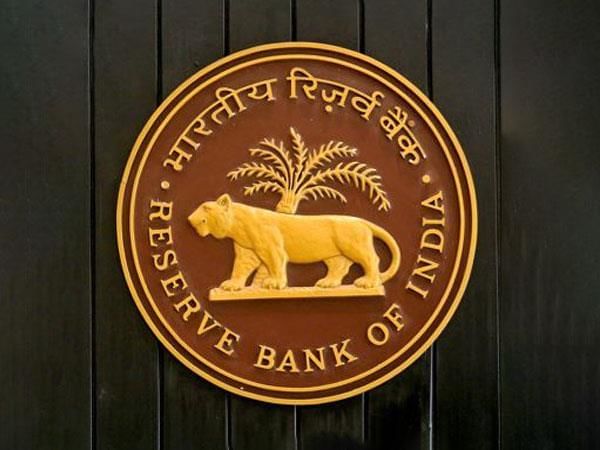 Why in News?
Why in News?The Reserve Bank of India's latest Urban Consumer Confidence Survey (UCCS) indicates that urban consumers are maintaining stable sentiments regarding the current economic situation, showcasing a cautious optimism for the future.
Key Takeaways
- The UCCS highlights a steady yet cautious optimism among urban households as of May 2025.
- While current sentiments remain subdued, expectations around income, employment, and inflation control are notably optimistic.
Additional Details
- About UCCS: The UCCS is a bi-monthly survey conducted by the RBI to gauge household perceptions in major urban centers concerning economic conditions, employment, income, inflation, and consumer spending. In May 2025, it gathered insights from 6,090 respondents across 19 cities. This round marks the first formal naming of the survey to distinguish it from the new Rural Consumer Confidence Survey.
- Indices Explained:
- Current Situation Index (CSI): Measures households' perceptions of their present economic conditions. In May 2025, the CSI slightly declined from 95.5 in March to 95.4, remaining below the benchmark of 100.
- Future Expectations Index (FEI): Gauges optimism regarding the next 12 months in terms of income, employment, and price levels. The FEI rose from 122.4 in March to 123.4 in May, indicating growing consumer hope for future improvements.
- The survey revealed a decline in inflation concerns, with urban households reporting reduced worries about current price levels. The perceived current inflation dropped by 10 basis points to 7.7% in May, and one-year ahead inflation expectations fell by 20 basis points to 9.5%.
- Despite unchanged perceptions of current income and employment, optimism about future earnings remains high, influencing consumer spending behavior positively.
- The newly launched Rural Consumer Confidence Survey, conducted in April and May 2025, shows a rural CSI drop from 100.1 to 100.0, but optimism remains higher than in urban areas, with a rural FEI of 126.2.
These findings are crucial for policymakers, as they highlight the importance of anchoring inflation expectations to ensure macroeconomic stability and maintain consumer confidence across urban and rural areas. The data suggests that effective monetary policy by the RBI is potentially achieving its desired effects, fostering a positive outlook on economic recovery.
|
41 videos|5359 docs|1134 tests
|
FAQs on UPSC Daily Current Affairs: 8th June 2025 - Current Affairs & Hindu Analysis: Daily, Weekly & Monthly
| 1. What is Powai Lake and why is it significant? |  |
| 2. Who was Raja Bhabhut Singh and what is his legacy? |  |
| 3. What is the National Population Register (NPR) and why is the census triggering its update? |  |
| 4. What is the Dynamic Route Planning for Urban Green Mobility (DRUM) Web App? |  |
| 5. How are bacteriophages being used to combat antimicrobial resistance? |  |





















